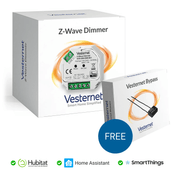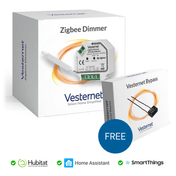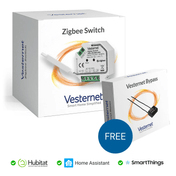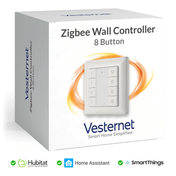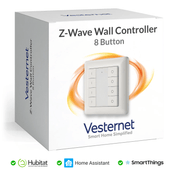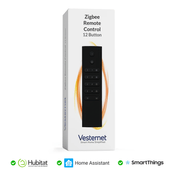Modern smart homes present increasing complexity that extends far beyond simple device installation. As homeowners embrace sophisticated automation systems, the traditional DIY approach frequently results in fragmented networks, security vulnerabilities, and performance issues that ultimately cost more to resolve than professional installation would have cost initially. Integration challenges between different protocols, suboptimal device placement, and inadequate network architecture often leave homeowners frustrated with systems that fail to deliver on their automation promises.

Professional home automation installation services provide a strategic solution through structured system architecture, comprehensive integration planning, and expert deployment methodologies. A qualified smart homes company approaches installation with systematic planning that ensures seamless device interoperability, optimal network performance, and scalable architecture designed for long-term reliability. This structured approach transforms complex technology integration into intuitive, user-friendly automation that genuinely enhances daily living.
This comprehensive guide explores the fundamental aspects of professional smart home service delivery, from initial architectural planning through advanced system integration and ongoing management. Readers will gain insights into how expert installers approach system design, the methodologies that ensure reliable performance, and the strategic planning that creates future-proof automation solutions capable of evolving with changing technology and user requirements.
Understanding Professional Smart Home Architecture
Professional smart home system design operates on fundamentally different principles than consumer DIY approaches. Rather than adding devices incrementally, expert installers begin with comprehensive system architecture that considers network topology, protocol integration, and long-term scalability from the outset. This architectural foundation ensures reliable communication between devices while maintaining optimal performance across the entire automation network.

Key elements of professional system architecture:
- Strategic protocol selection based on home layout and device requirements
- Network topology planning that optimises signal strength and reliability
- Gateway hub selection for seamless multi-protocol integration
- Infrastructure assessment to identify potential interference sources
Professional architects evaluate wireless protocols including Z-Wave, Zigbee, and WiFi-based systems to determine optimal combinations for specific installations. This evaluation considers factors such as mesh network capabilities, device compatibility, and interference potential that casual installers often overlook. The result is a cohesive system where each component contributes to overall network stability and performance.
Strategic Installation Planning and Assessment
Comprehensive pre-installation planning distinguishes professional smart home service providers from conventional installation approaches. This process begins with detailed property assessment that evaluates structural considerations, existing infrastructure, and potential challenges that could affect system performance. Professional installers conduct thorough site surveys to identify optimal device placement locations and potential sources of wireless interference.
User requirement analysis forms the foundation of effective installation planning. Professional installers work closely with homeowners to understand daily routines, automation preferences, and long-term goals for their smart home systems. This collaborative approach ensures that system design aligns with actual usage patterns rather than generic automation scenarios.
Essential planning components include:
- Detailed property mapping and infrastructure evaluation
- User lifestyle assessment and automation requirement analysis
- Device placement optimisation for coverage and performance
- Future expansion planning and scalability considerations
Multi-Protocol Integration and Gateway Selection
Modern professional home automation systems leverage multiple communication protocols to achieve comprehensive device compatibility and optimal performance. Expert installers design unified architectures that seamlessly integrate Z-Wave, Zigbee, WiFi, and other protocols through carefully selected gateway controllers that serve as the central nervous system of the automation network.
Gateway selection criteria for professional installations:
- Multi-protocol support for diverse device ecosystems
- Processing power adequate for complex automation scenarios
- Local processing capabilities to reduce cloud dependency
- Expansion capacity for future device integration
Professional integration planning ensures that devices from different manufacturers and protocols operate cohesively within a single management interface. This approach eliminates the fragmentation common in DIY installations where homeowners often struggle with multiple apps and incompatible systems. Expert installers create unified control experiences that mask the underlying technical complexity while delivering intuitive automation management.
Professional Installation Workflow and Best Practices
The professional installation process follows systematic methodologies that ensure consistent, reliable results across diverse property types and system configurations. This structured approach begins with network infrastructure setup, progresses through methodical device commissioning, and concludes with comprehensive system testing and documentation.

Quality assurance protocols distinguish professional installations from DIY approaches. Each device undergoes individual testing and integration verification before system handover, ensuring that every component functions correctly within the broader automation network. Professional installers maintain detailed documentation throughout the installation process, creating comprehensive system records that facilitate future maintenance and expansion.
Professional installation workflow stages:
- Network infrastructure configuration and testing
- Sequential device installation and commissioning
- System integration testing and performance verification
- User training and documentation handover
Advanced Control Integration and User Interface Design
Professional smart home service providers create sophisticated control interfaces that balance functionality with usability. Rather than overwhelming users with technical complexity, expert installers design intuitive control systems that provide easy access to commonly used functions while maintaining advanced capabilities for power users who require detailed system control.
Professional control system components:
- Centralised wall controllers for primary system interaction
- Mobile applications with customised interface design
- Voice control integration with popular assistant platforms
- Remote access capabilities for system management
Interface design considers user demographics, technical comfort levels, and daily usage patterns to create control systems that genuinely enhance convenience rather than adding complexity. Professional installers configure custom scenes, automation rules, and notification systems that align with household routines and preferences, ensuring that the smart home system integrates seamlessly into daily life.
Service Integration and Ongoing System Management
Professional home automation extends beyond initial installation to encompass comprehensive system management throughout the technology lifecycle. Expert service providers offer ongoing monitoring, maintenance, and optimisation that keeps systems operating at peak performance while adapting to evolving user requirements and technology updates.
Proactive system management includes regular performance monitoring, software updates, and preventive maintenance that identifies potential issues before they affect system reliability. Professional service providers maintain detailed system histories that enable rapid troubleshooting and efficient resolution of any technical challenges that may arise.
Ongoing service components include:
- Remote system monitoring and performance analysis
- Scheduled maintenance and software updates
- Technical support and troubleshooting assistance
- System expansion and upgrade planning
Troubleshooting and Performance Optimisation
Complex smart home systems inevitably encounter technical challenges that require expert diagnosis and resolution. Professional installers possess the experience and diagnostic tools necessary to identify and resolve network interference issues, device compatibility problems, and performance bottlenecks that frequently overwhelm DIY installations.
Common professional troubleshooting capabilities:
- Network analysis and interference source identification
- Device compatibility assessment and resolution
- Performance optimisation and network tuning
- Security vulnerability assessment and remediation
Professional troubleshooting extends beyond simple device replacement to encompass systematic network analysis and architectural optimisation. Expert technicians utilise specialised diagnostic equipment to analyse wireless networks, identify interference sources, and implement targeted solutions that restore optimal system performance while preventing future issues.
Future-Proofing and System Evolution Planning
Professional smart home installations incorporate strategic planning for technology evolution and system expansion. Rather than creating static installations, expert installers design scalable architectures that accommodate emerging technologies, changing user requirements, and device lifecycle management throughout the system's operational life.

Future-proofing strategies include infrastructure planning that supports higher bandwidth requirements, gateway selection with expansion capabilities, and architectural flexibility that enables seamless integration of new device categories and communication protocols as they become available.
Future-proofing considerations include:
- Scalable network architecture for system expansion
- Gateway selection with upgrade pathways
- Infrastructure planning for emerging technologies
- Device lifecycle management and replacement planning
Conclusion
Professional smart home installation services deliver comprehensive solutions that transform complex technology integration challenges into reliable, user-friendly automation systems. Through structured architectural planning, expert system integration, and ongoing service support, qualified installers create scalable home automation that provides lasting value while adapting to evolving technology and user requirements. The investment in professional installation pays dividends through improved system reliability, enhanced user experience, and reduced long-term maintenance costs.
Consider professional home automation installation as a strategic approach to smart home deployment that ensures optimal performance from day one. Expert guidance eliminates the frustration and additional costs associated with DIY installation challenges while delivering sophisticated automation systems that genuinely enhance daily living. Professional installation transforms technology complexity into intuitive convenience that grows with your household's changing needs.
Ready to explore professional smart home solutions for your property? Vesternet's comprehensive range of gateway controllers, wireless protocols, and control interfaces provides the foundation for expertly designed automation systems. Browse our curated collections of multi-protocol hubs, intelligent thermostats, and professional-grade controllers to discover the components that power today's most sophisticated smart home installations.










